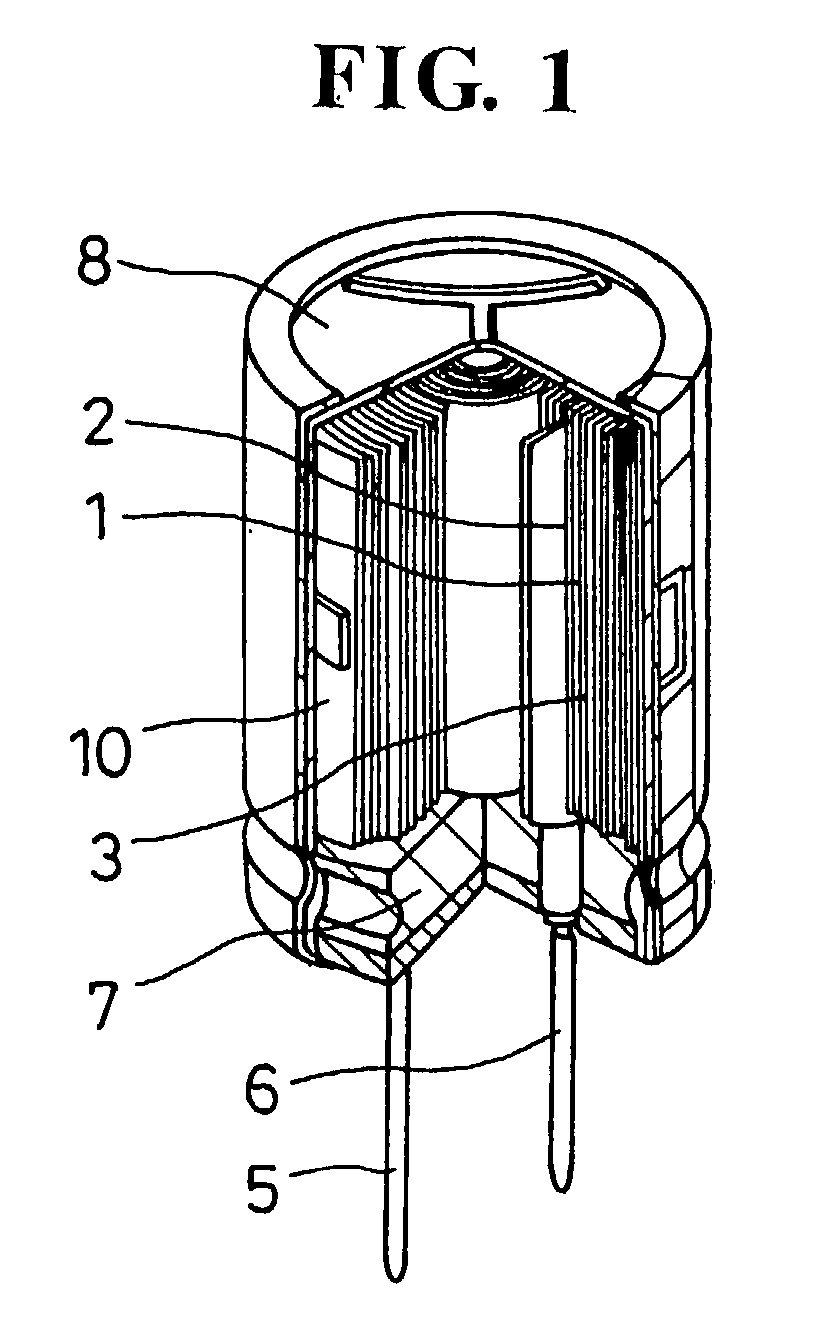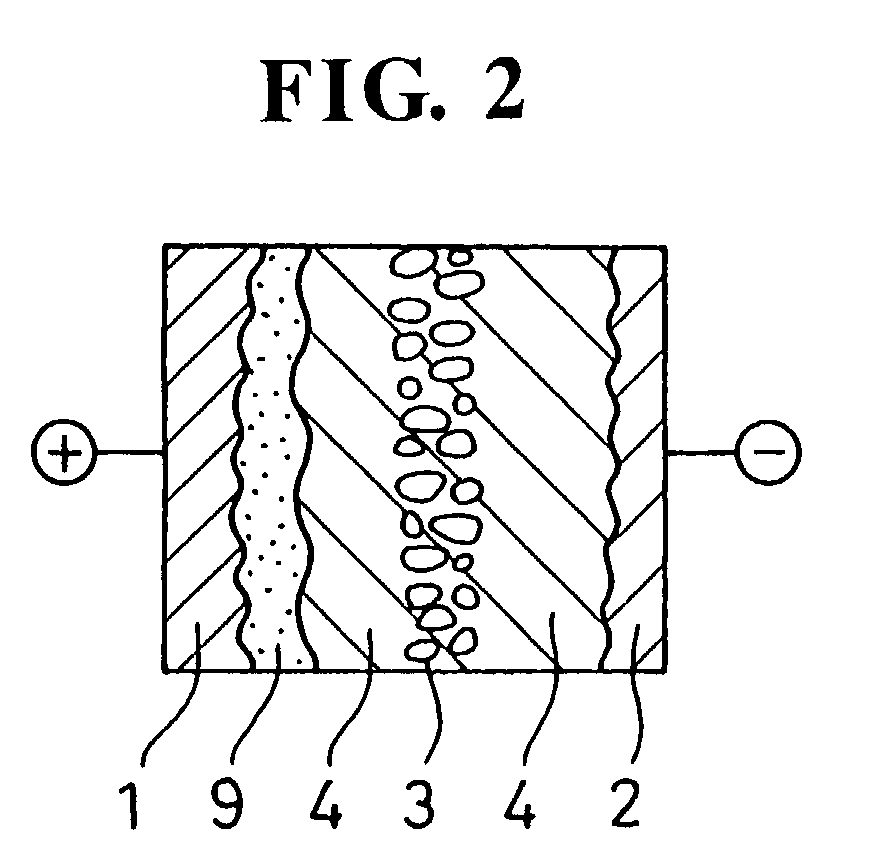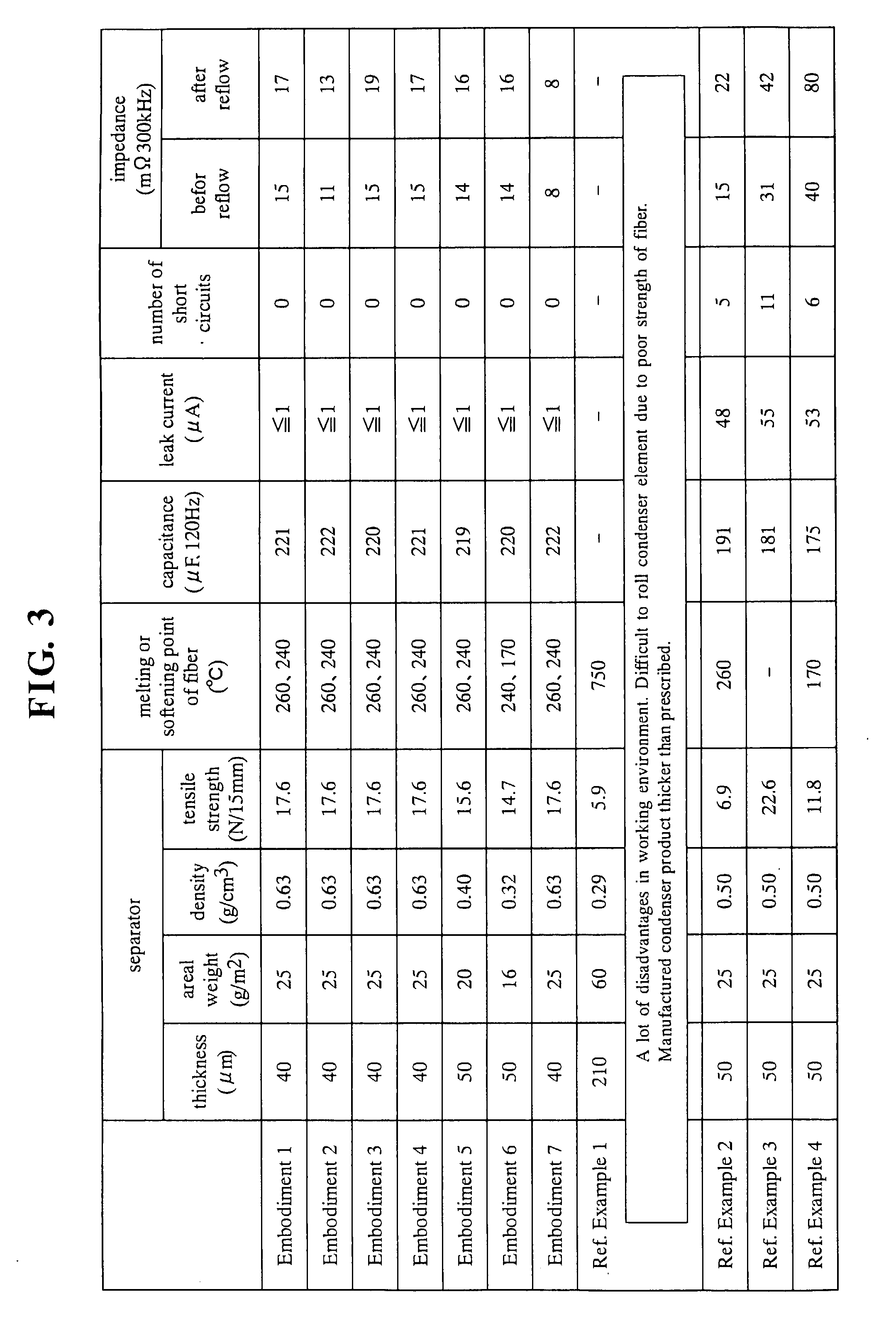Separator for solid electrolyte condenser and solid electrolyte condenser using the same
- Summary
- Abstract
- Description
- Claims
- Application Information
AI Technical Summary
Benefits of technology
Problems solved by technology
Method used
Image
Examples
embodiment 1
[0039] [Embodiment 1]
[0040] an insulating oxide film was formed on the surface of the anode foil by the anodic oxydization under the voltage 35 V Then, thus treated anode foil and the cathode foil of which surface was roughened by etching were rolled by holding the separator A between them, thereby obtaining a condenser element. Then, the condenser element was impregnated with 10 weight % ethylene glycol solution of anmonium salt of adipic acid. Thus, the electrostatic capacitance of the condenser element was 300 .mu.F at frequency 120 Hz. Then, the condenser element was impregnated with a solution of 1 part of ethylene dioxy thiophene which is a heterocyclic monomer and 4 parts of p-toluenesulphonic acidiron(II) which is an oxydizing agent and n-buthanol which is a polymerizing solution. By leaving the condenser element at 85.degree. C. for 60 minutes after completing the impregnation, a solid electrolyte of polyethylenedioxythiophene which is a chemically polymerized conductive po...
embodiment 2
[0041] [Embodiment 2]
[0042] In the embodiment 1, before forming the solid electrolyte of polyethylene dioxythiophene, the condenser element was impregnated in an aqueous solution of 1.0% polyethylenedioxythiophenepolystyrenesulphonic acid By drying the condenser element at 150.degree. C. for 5 minutes, a layer of polyethylenedioxythiophenepolystyrenesulphonate was formed. The solid electrolyte condenser was manufactured in the same manner as described in [Embodiment 1], except the above-mentioned processes.
embodiment 3
[0043] [Embodiment 3]
[0044] In the [Embodiment 1], in place of polyethylenedioxythiophene, the condenser element was impregnated with tetracyanoquinodimethane complex salt (TCNQ) The above-mentioned process was executed at a temperature higher than 200.degree. C. Then, by cooling the condenser element down to the room temperature, a solid electrolyte of TCNQ was formed in the condenser element. The solid electrolyte condenser was manufactured in the same manner as described in [Embodiment 1], except the above-mentioned processes.
PUM
| Property | Measurement | Unit |
|---|---|---|
| Linear density | aaaaa | aaaaa |
| Percent by mass | aaaaa | aaaaa |
| Diameter | aaaaa | aaaaa |
Abstract
Description
Claims
Application Information
 Login to View More
Login to View More - R&D
- Intellectual Property
- Life Sciences
- Materials
- Tech Scout
- Unparalleled Data Quality
- Higher Quality Content
- 60% Fewer Hallucinations
Browse by: Latest US Patents, China's latest patents, Technical Efficacy Thesaurus, Application Domain, Technology Topic, Popular Technical Reports.
© 2025 PatSnap. All rights reserved.Legal|Privacy policy|Modern Slavery Act Transparency Statement|Sitemap|About US| Contact US: help@patsnap.com



